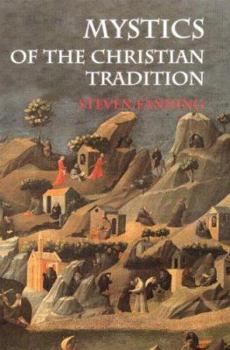Mystics of the Christian Tradition
Select Format
Select Condition 
Book Overview
From divine visions to self-tortures, some strange mystical experiences have shaped the Christian tradition. Full of colourful detail, this book examines the mystical experiences that have determined the history of Christianity.
Format:Paperback
Language:English
ISBN:0415224683
ISBN13:9780415224680
Release Date:April 2001
Publisher:Routledge
Length:298 Pages
Weight:1.21 lbs.
Dimensions:0.6" x 6.1" x 9.1"
Customer Reviews
1 rating
Time-honoured traditions
Published by Thriftbooks.com User , 22 years ago
This book is a great primer to the mystical traditions of Christianity. As the use of the plural implies, there are in fact many different, divergent traditions of mysticism and mystical knowledge in history and family of Christendom. Fanning looks at many of the major traditions, and some of the lesser known, too. Fanning's approach is rather interesting. Many texts on mysticism, Christian or otherwise, tend to look at the philosophy, the practices, or the primary textual sources as being the focus of consideration. While these are certainly not absent in this text, Fanning in fact uses a method of looking at the mystics themselves, rather than the traditions, philosophies, etc. of which they are a part. Origins Fanning's first chapter looks at the Greco-Roman underpinnings of mystical tradition, feeling, experience and social place that provided the seedbed for Christian mysticism. Plato, Gnostic traditions, Mystery Religions, and basic Jewish mystical practice are all considered in turn. Fanning highlights one of the divergent points between Judaism and Christianity in the first few centuries of the Common Era as being that of an early loss of mystical tradition and tolerance among emerging rabbinic Jews, a loss that was not paralleled in the Christian tradition for another few centuries, when Christian mysticism was deemed generally dangerous to established and forming hierarchies. Mystical experience was not limited by gender, race, class, education or social class. This made it a potential natural enemy of hierarchies that relied on stratification exactly along those lines. The Eastern Church It was in the early Eastern Church that mystical traditions continued strong and less hierarchically challenged. As the Western Roman Empire disintegrated, the need for clear-cut authority and hierarchy led to a heavy hand on various kinds of practices; however, the relative stability of the East meant that the established church had more latitude for incorporating mystics and mystical experiences into the overall church structure. It remains a significant hallmark of Eastern Orthodoxy and its fellow travelers among denominations that the activity of the Holy Spirit remains a much-prized and much-celebrated facet. The Western Church in the Middle Ages Many of the mystics with whom the world is most familiar come from western Europe during the time of the Middle Ages. It has been a feature of the latter half of the twentieth century to recover especially women's voices and characters from among these people. Looking at Cassian, Benedict, Augustine, Gregory and Bernard, the dominance of monastic ideals and the cross-pollination of monastery and mystic is seen full force. Contemporary with these men were Hildegard and Christina Markyate. Fanning ends his chapter with an interesting discussion of Catherine of Siena, Birgitta, Margery Kempe and Catherian of Genoa juxtaposed with a brief tale of famous person little known or considered for mystical and rel





